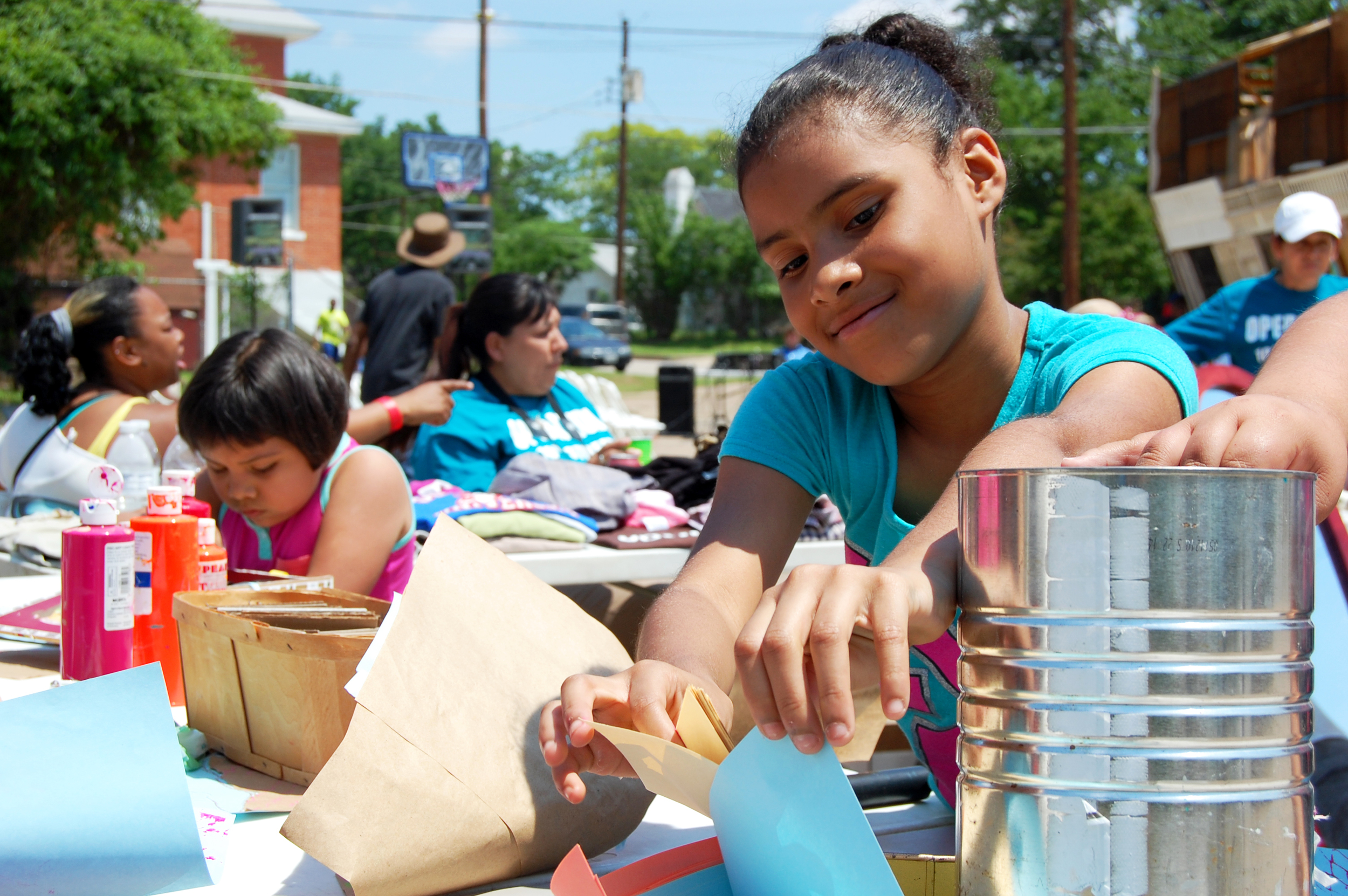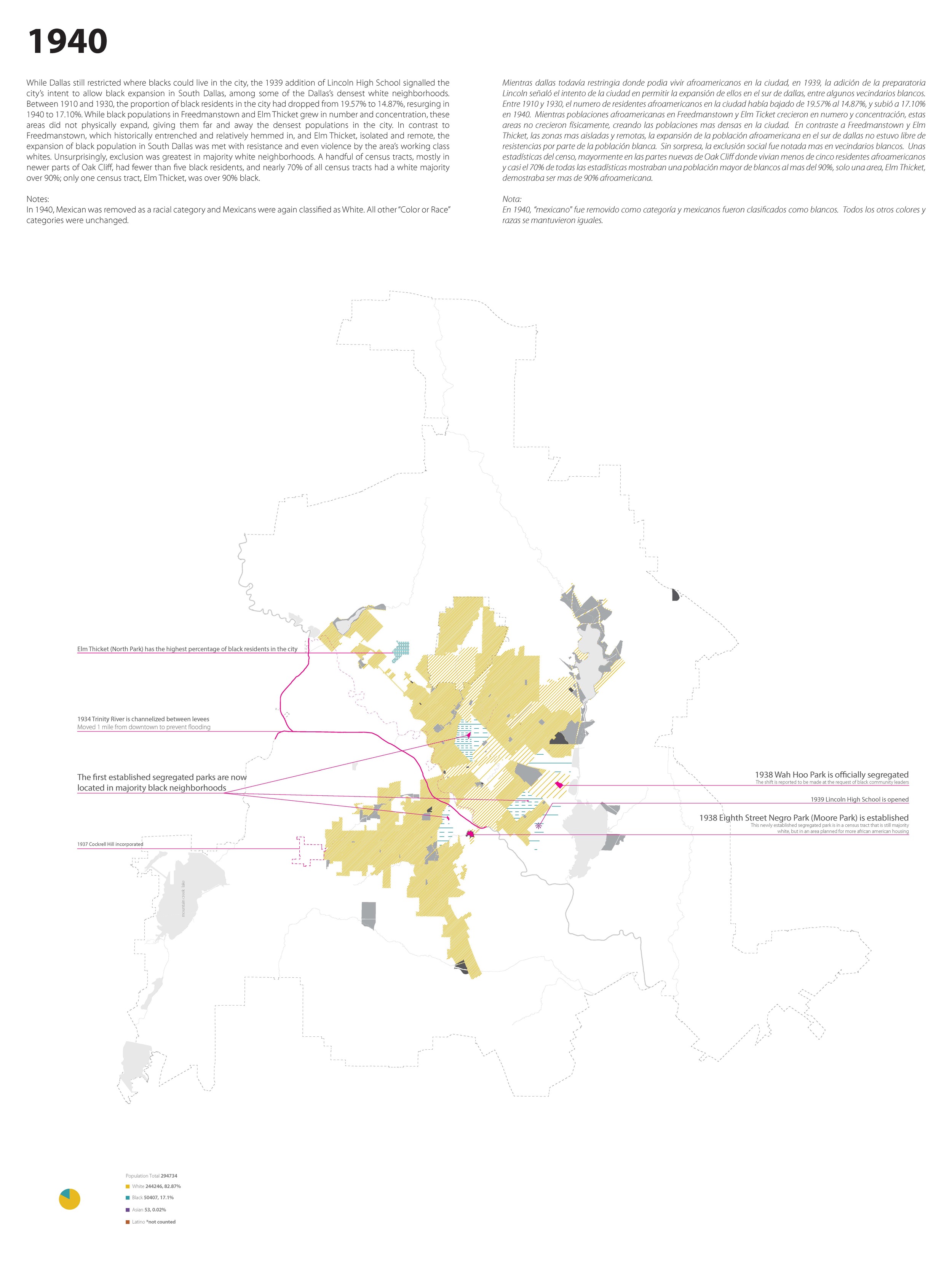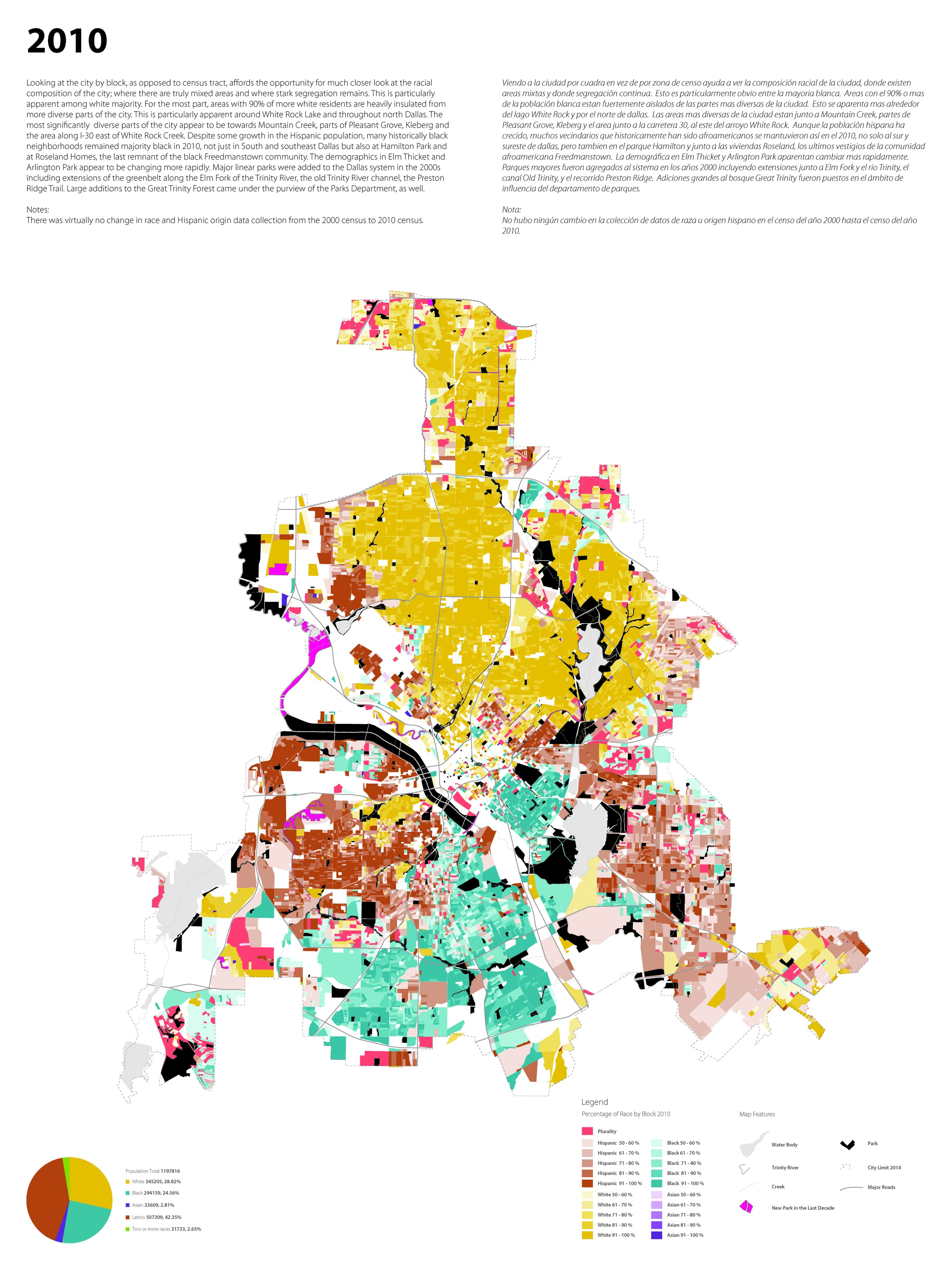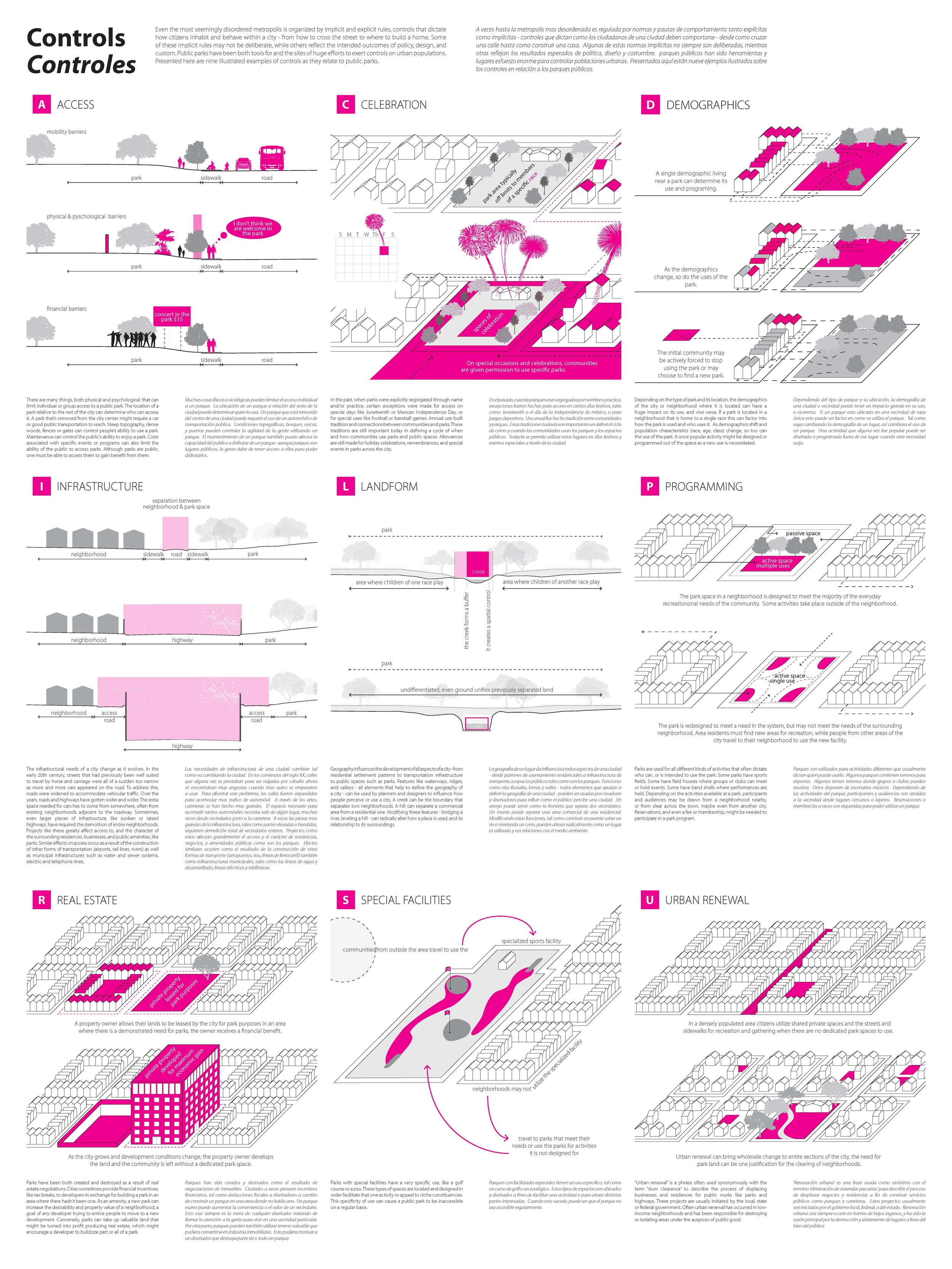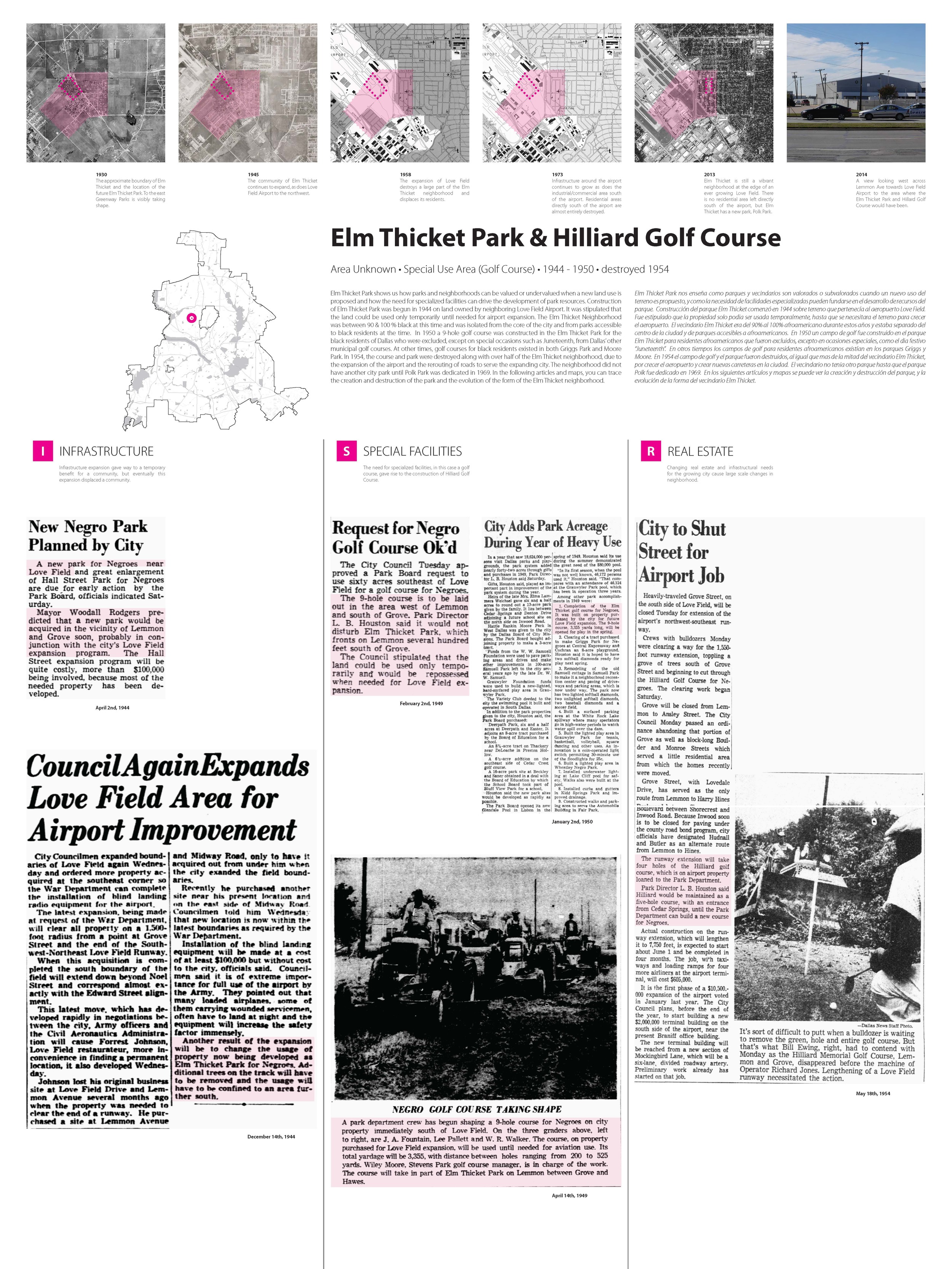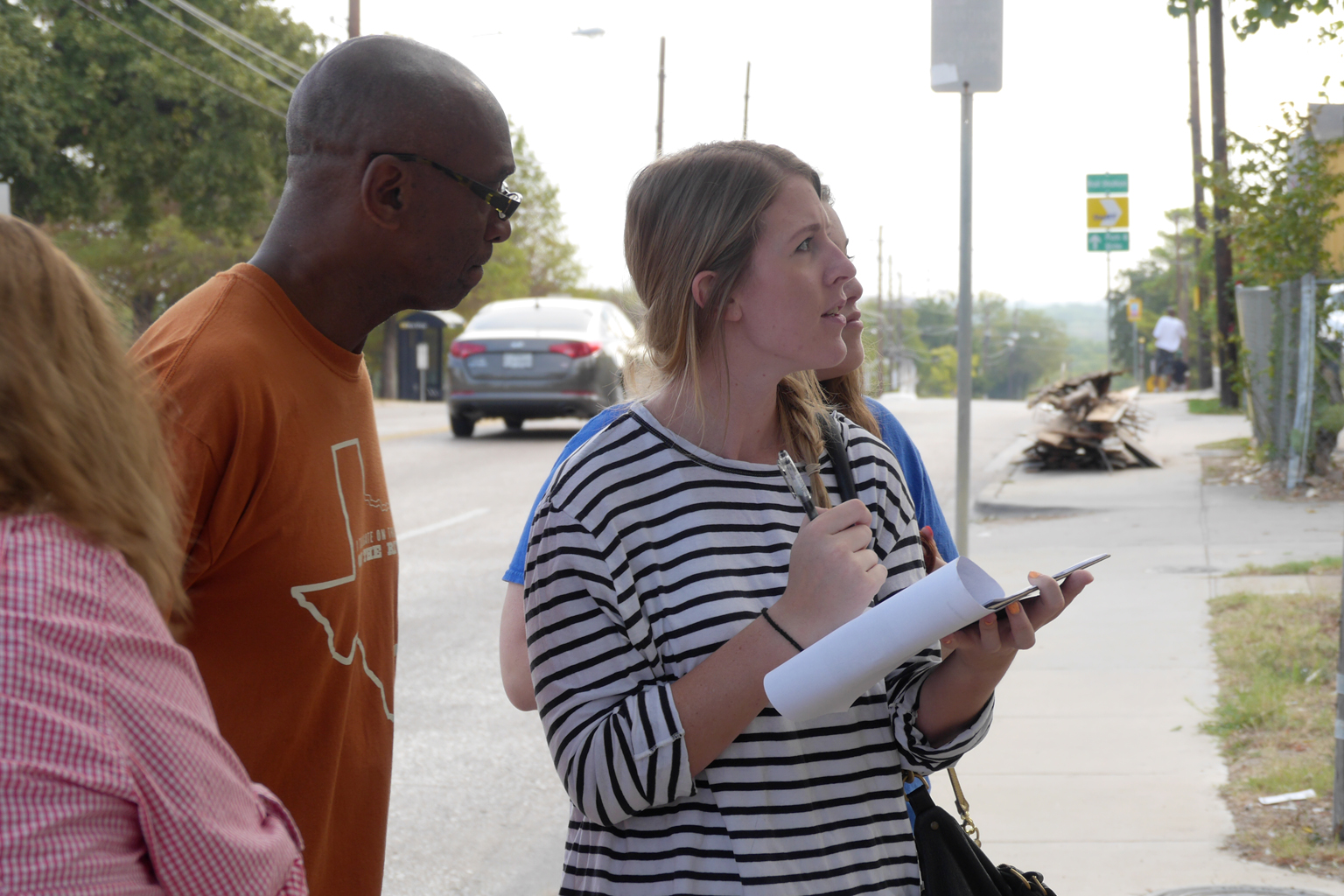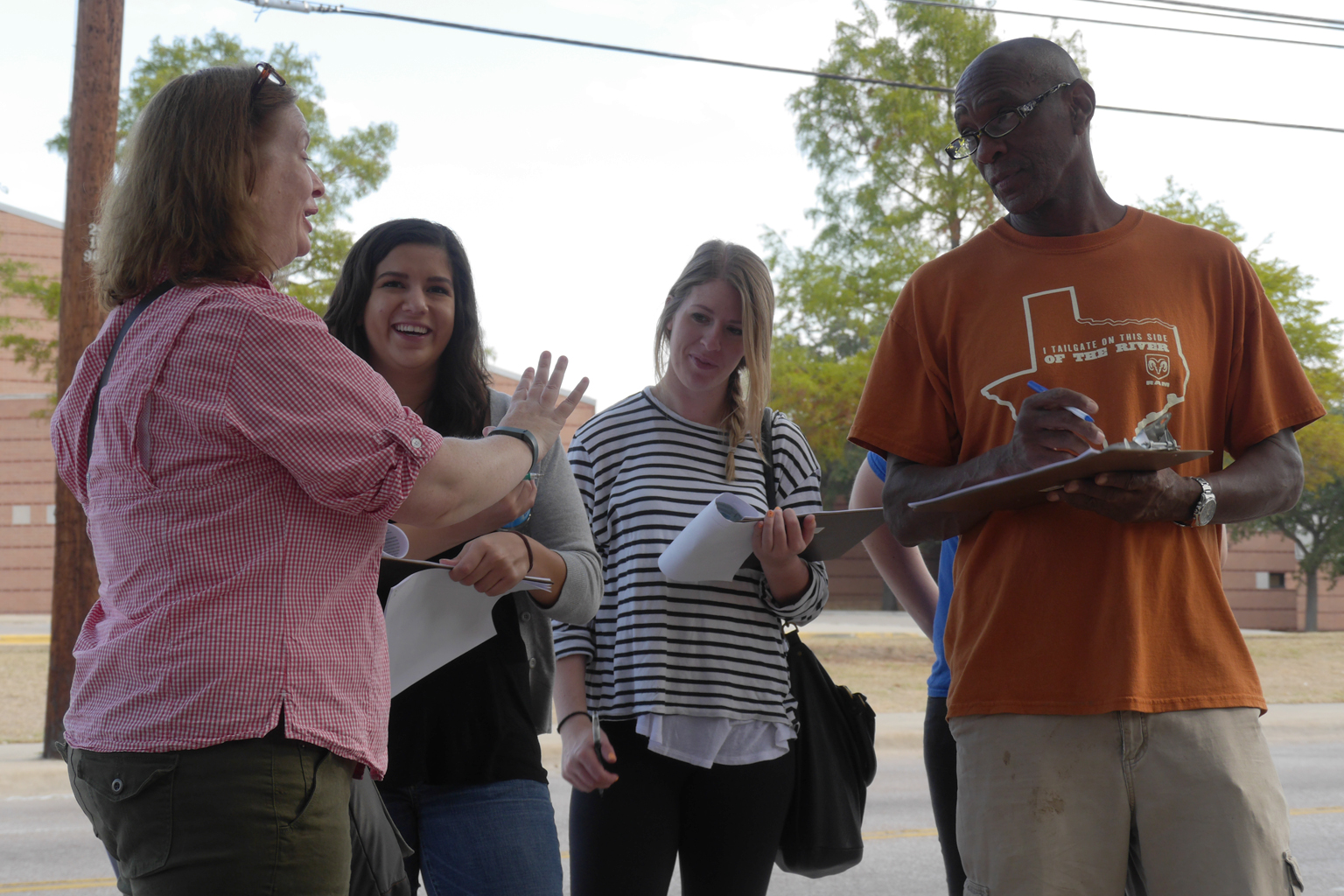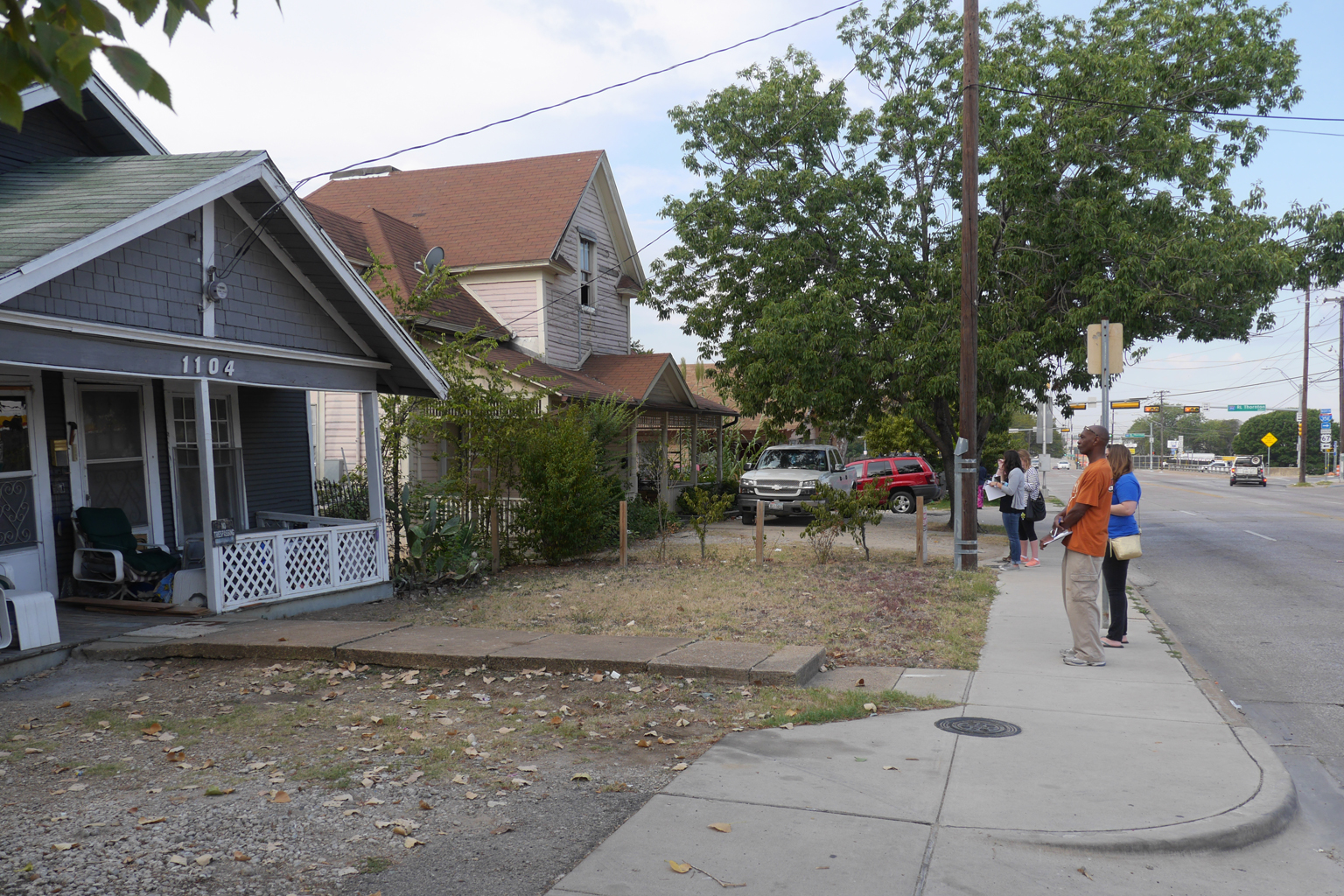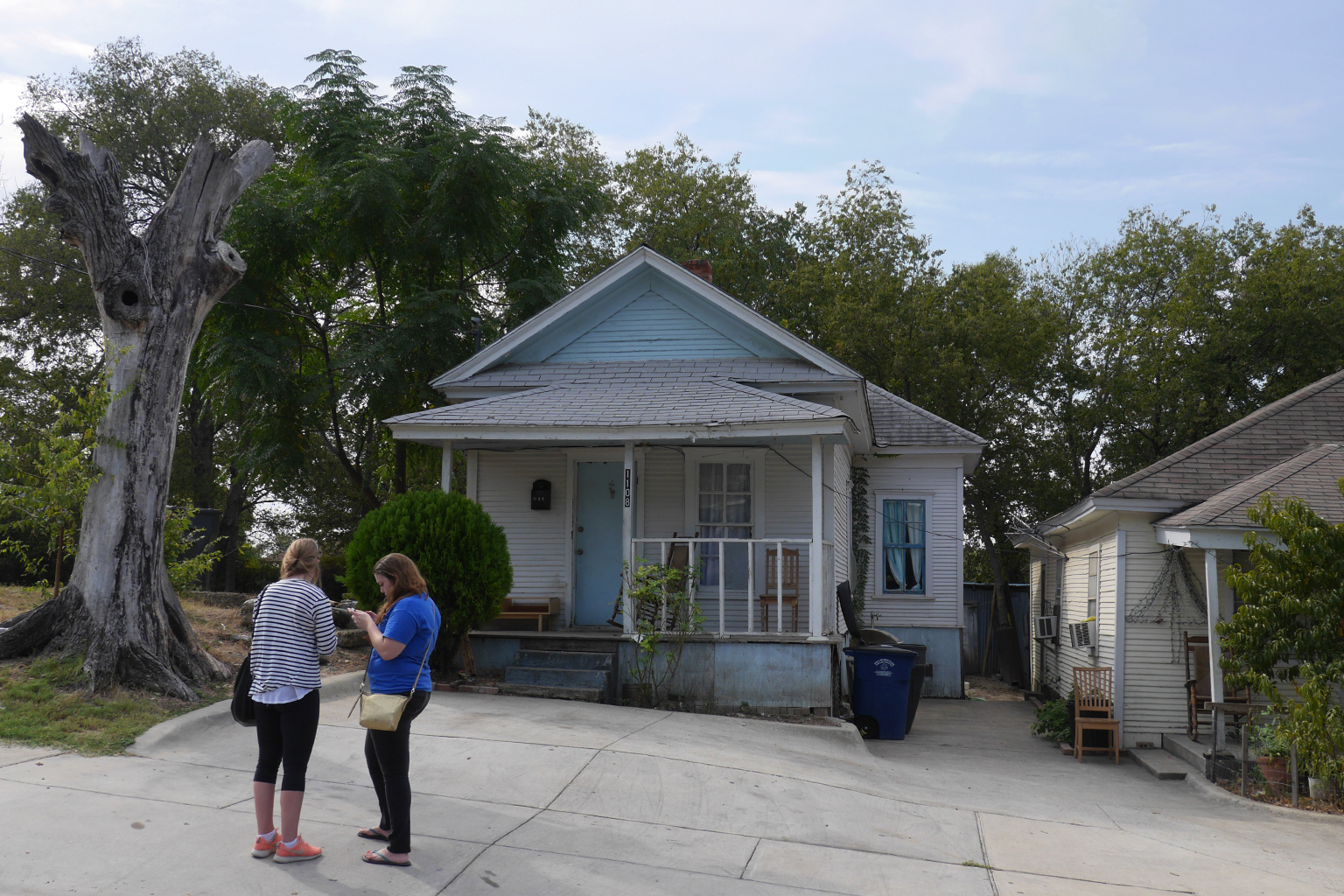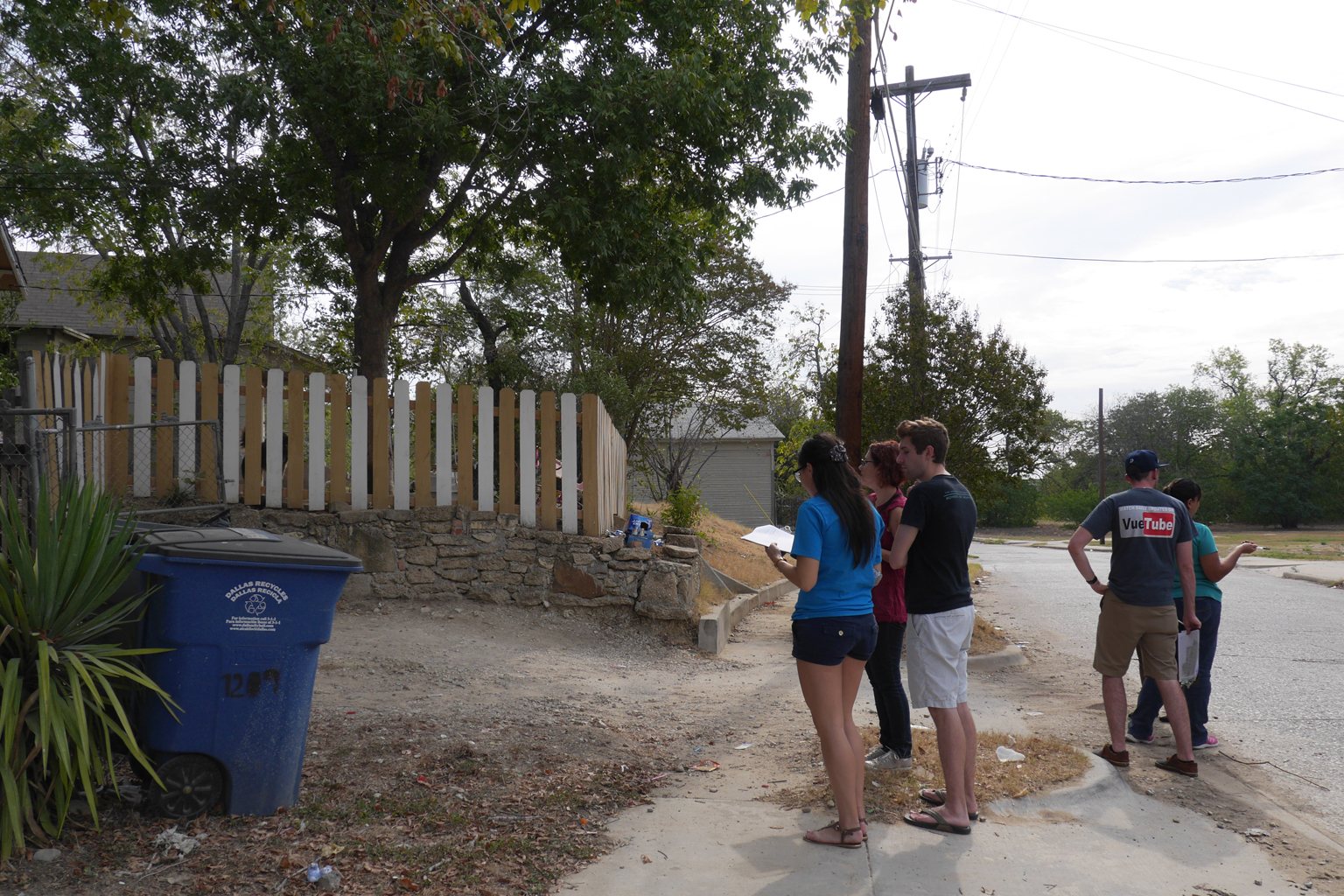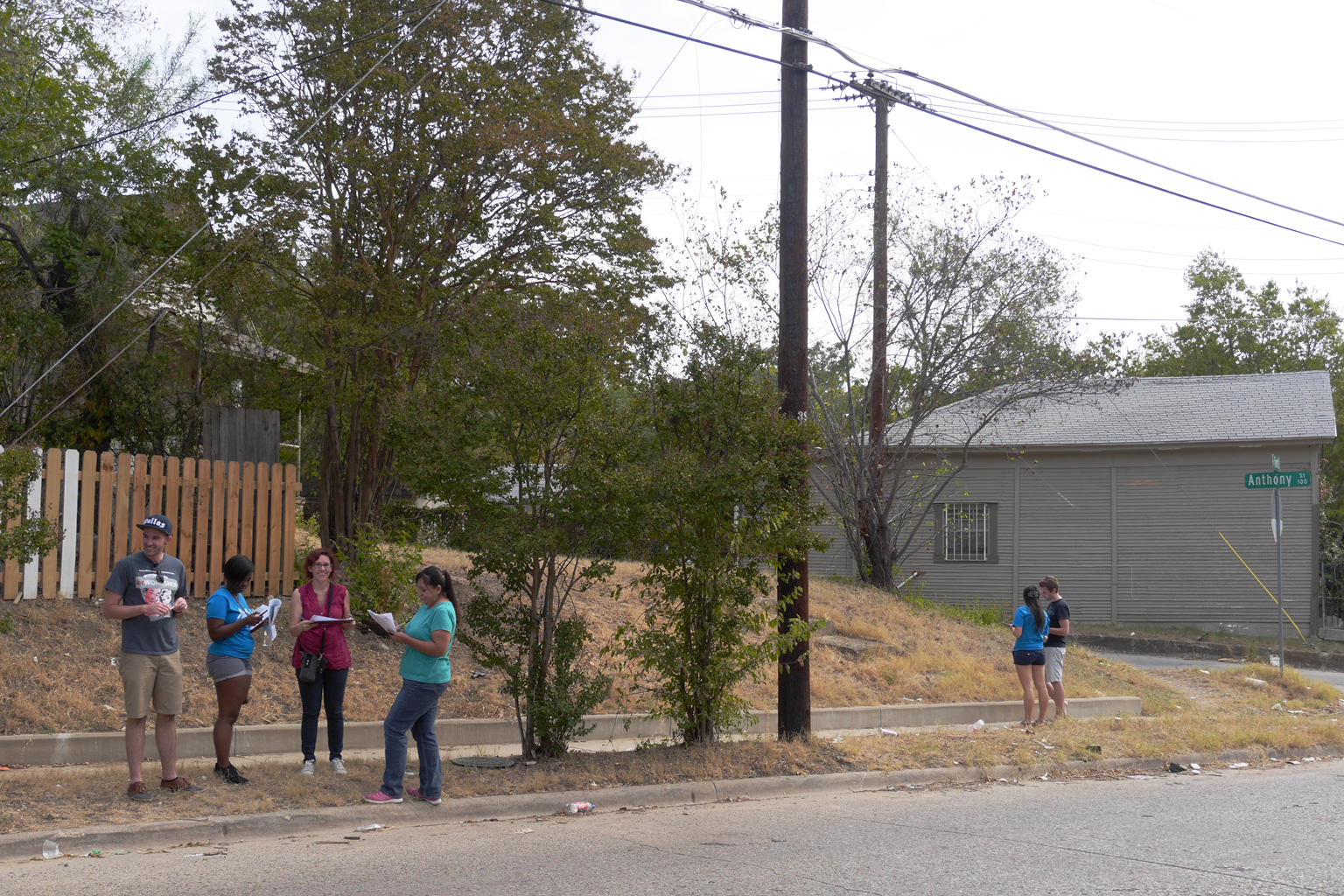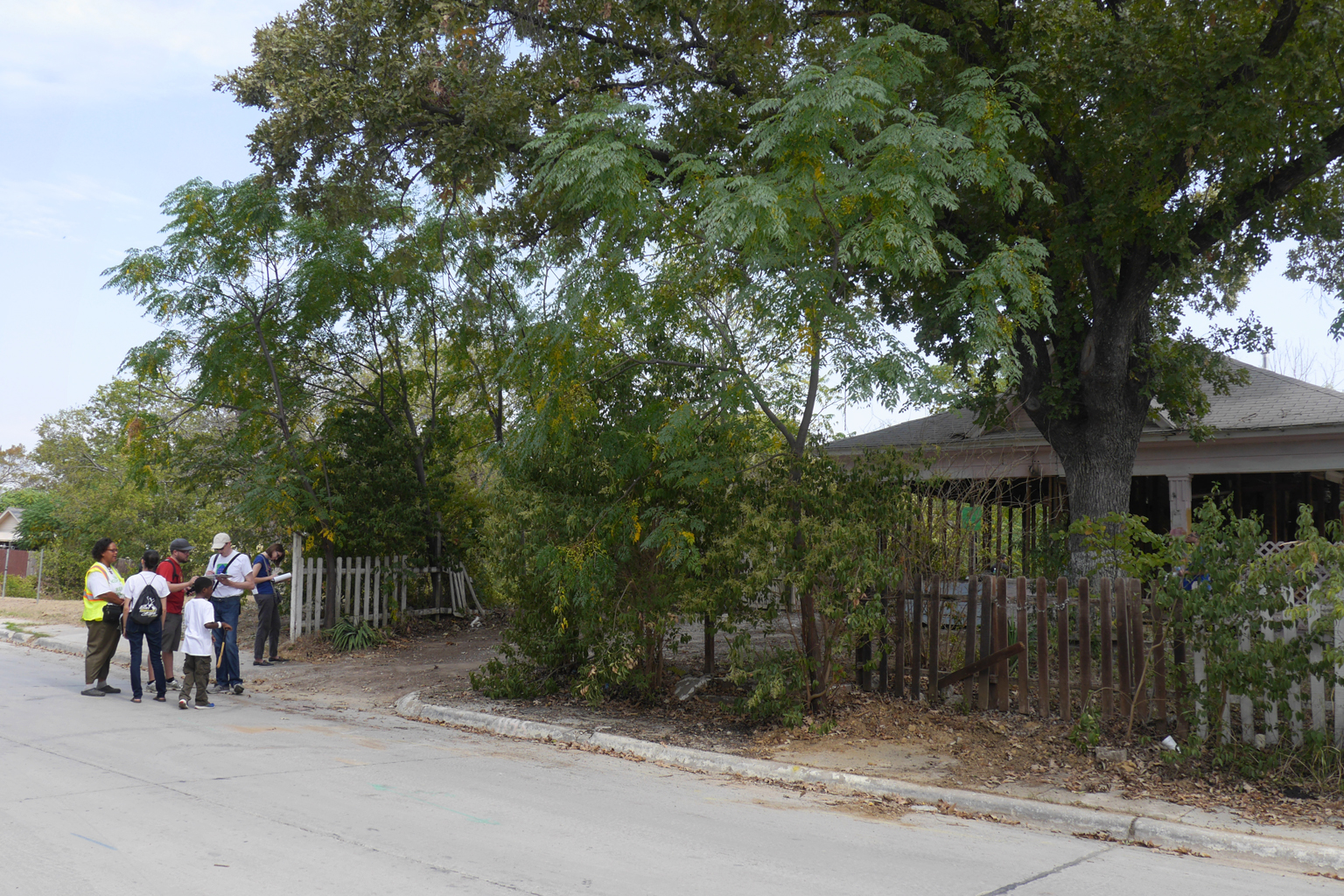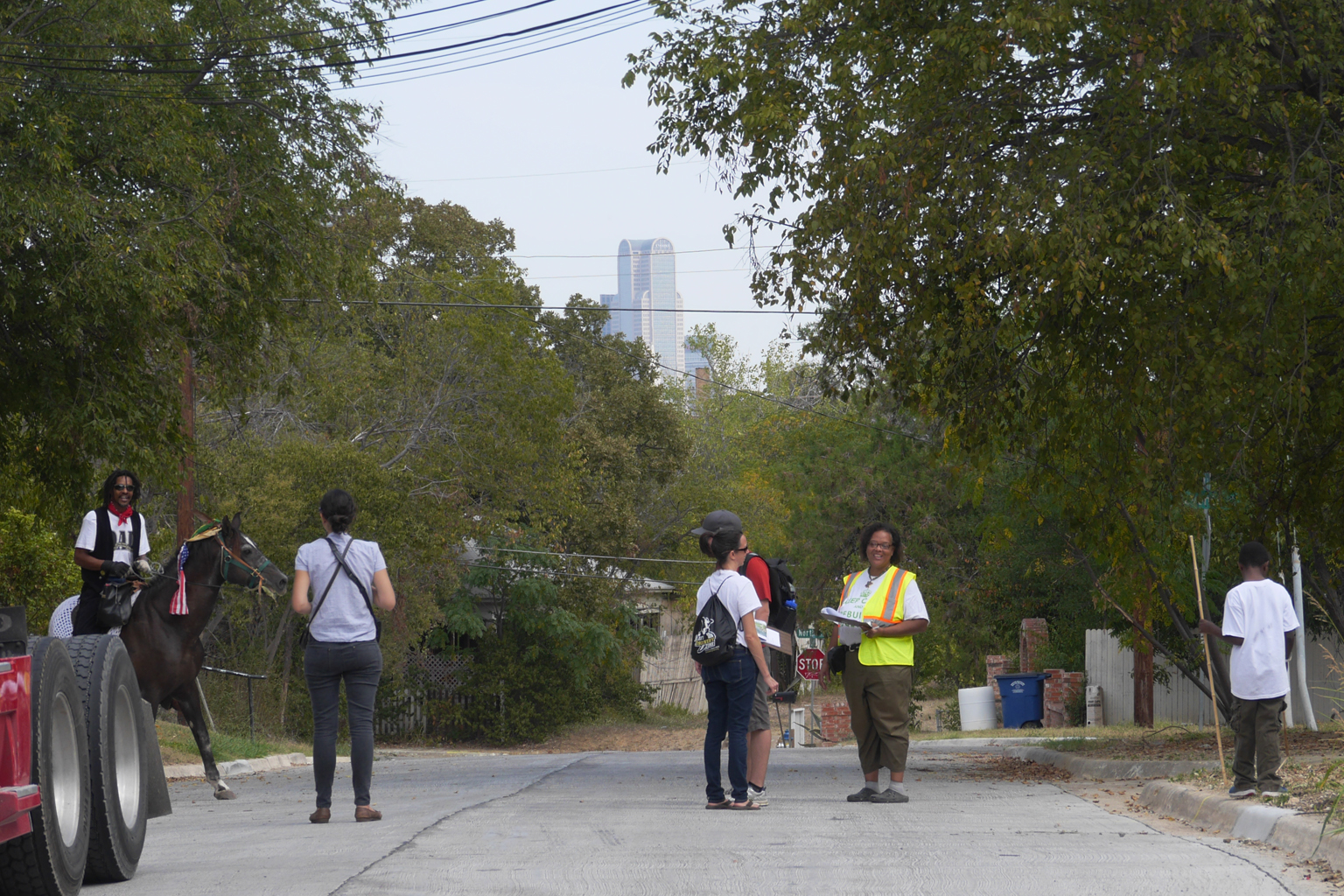[bc] has always aspired to impact neighborhoods across the state by using design to build capacity and empower communities. In Dallas, [bc] reasoned that in order to support neighborhoods through our work, we first needed to know what and where the neighborhoods of Dallas were, launching what was then known as the Dallas Neighborhoods Project.
Read MoreIntroducing the POP Neighborhood Map blog!
The POP Neighborhood Map Blog is a new digital platform that will chronicle the evolution of the POP Neighborhood Map and expounds why neighborhoods matter. The launch of this blog coincides with the launch of two new interactive digital tools - Know Your Neighborhood and Draw Your Neighborhood - the most recent effort of our ongoing POP Neighborhood Map project.
Read MoreThe Second Annual Ark Festival: The History, Present & Future of Tenth Street
Learn more about Activating Vacancy.
Last year, as part of our Activating Vacancy initiative, artist Christopher Blay and [bc] collaborated with the Tenth Street Historic District community to produce the Ark on Noah Street. The Ark is a sculpture, a gallery, a museum and a symbol. When Christopher Blay created the concept of the Ark, a fundamental facet of the project was that it be reproduced yearly to keep art and culture active in the Tenth Street Historic District and to create an opportunity to celebrate, share and reflect on the neighborhood's history and the changes of the year.
On May 2, 2015, the Ark was again commemorated during the Second Annual Ark Festival, a gathering of the Dallas arts community and the Tenth Street Historic District that was even bigger and better than before! The festival featured a processional of residents with original artwork depicting the neighborhood's history and its growth since the Ark was last seen, a performance of the original Story Corners play "A Freeman Cries for the Future," a visit from the Dallas Zoo, and the return of the Neighborhood Stories: Tenth Street exhibit. There was also a small marketplace for neighbors and arts activities led by Oil and Cotton.
The Tenth Street Historic District is one of Dallas’ oldest neighborhoods and one of its few remaining freedmen’s towns, communities built by freed slaves following the Civil War. Despite being designated a landmark district by the City of Dallas in 1993 and being listed on the National Register of Historic Places in 1994, the neighborhood has lost population and housing stock at a rapid pace. It has also experienced a growth in crime and a deteriorating public image. In response to these challenges, [bc] initiated Activating Vacancy to encourage residents to reshape the vacancy in their neighborhood from blight to opportunity through a series of public art activities, beginning with the Ark on Noah Street.
Activating Vacancy existed at a nexus of creative placemaking, public art and community organizing. Inspired by similar initiatives such as the Heidelberg Project in Detroit and Project Row Houses in Houston, Activating Vacancy sought to set in motion the revitalization of an important historic community, provide commentary regarding an array of urban issues such as vacancy and historic preservation and encourage a democratization of exceptional art in Dallas in terms of audiences, geographies and producers. The Ark on Noah Street was an excellent first step towards achieving these goals. The Ark as a gallery featured artwork produced by neighborhood residents. The Ark as a sculpture artfully repurposed discarded materials from Tenth Street's historic homes into a monument and testament to its history. The Ark as a festival brought neighbors, artists, critics and art consumers together to meet each other, rediscover an often forgotten part of Dallas and imagine a city where any neighborhood can be recognized as a source of valuable cultural producers.
At the Second Annual Ark Festival, it was made clear that the Tenth Street Historic District still faces tremendous challenges. Homes have been repaired, while others have been demolished. Crime is tempered, but it persists. There is also evidence of renewed action in the neighborhood: dozens of attendees wore Operation Tenth Street t-shirts, representing a new, forward-thinking neighborhood organization that has secured grant funding for neighborhood improvement projects. The Greater El Bethel Missionary Baptist Church has been repaired and again opens its doors to song and prayer on Sunday morning. And, the Ark has been rebuilt, fuller and more refined than its previous iteration.
In addition to the above challenges, there are a bevy of questions that have yet to be answered about the neighborhood that will help illuminate how sustainable its recent burst of energy is. Will Tenth Street be able to continue its revitalization with reduced non-profit activity? What will it take for Tenth Street to develop market interest in rebuilding its historic ground? Have recent efforts sufficiently demonstrated the neighborhood's value to the city at large to insist on its survival, whether through ongoing preservation efforts or through continued nurturing of its unique identity and role as cultural producer? Perhaps some of these questions will be answered and shared at the Third Ark Festival.
Texas ASLA Honor Award 2015: Race and the Control of Public Parks
Learn more about Race and the Control of Public Parks.
We're excited to announce our project on Race and the Control of Public Parks has received an Honor Award from the Texas chapter of the American Society of Landscape Architects!
According to the Texas ASLA, Professional Honor Awards are given to projects that highlight the diversity, distinction and ingenuity of landscape architecture. Race and the Control of Public Parks won in the research category, and the exhibit recognizes the ways in which the design, construction, programming, use, and alteration/renovation of public parks can reinforce divisions, both physical and perceived, between populations.
Sharing the Deepwood Story
Learn more about Neighborhood Stories, and visit the film's website.
It’s been an awesome few months for Out of Deepwood! Since the community sneak preview at the Trinity River Audubon Center in September, the film has played in several film festivals. On October 15, Out of Deepwood premiered to the general public as part of Dallas VideoFest 27, as part of a block of films hosted by the South Dallas Cultural Center, which included 50 Years, The New South Dallas, and Dawn. This was a great experience for us, giving us an opportunity to bring this story to a wider audience, while still focused on southern Dallas.
Following Dallas VideoFest, we released the film free online, and were excited to receive an Award of Merit from the Best Shorts Competition. Even more exciting, we had the opportunity to share this story across the nation in February, as we were accepted to the Big Sky Documentary Film Festival in Missoula, Montana, and the Big Muddy Film Festival at Southern Illinois University Carbondale.
DVDs of the film are currently for sale at the Trinity River Audubon Center for around $5. We are committed to providing this film for all who want to see it, so the DVDs are being sold at-cost for those who would like a physical copy of the film.
Currently, we are participating in the Audience Awards, an online film competition that awards prizes based on the votes that a film receives. Be sure to vote for us over the next few days, but also take the opportunity to view some of the other great work featured in the competition!
We look forward to continuing to share this story as an example of neighborhood activism leading to real, positive change.
What people are saying:
- "'Out of Deepwood' Powerfully Recounts Southeast Dallas Neighbors' Fight Against Massive Illegal Dump." - Sharon Grigsby, Dallas Morning News
- “If you watch one 23-minute documentary about a former illegal Dallas dump today, make it director Craig Weflen’s terrific Out of Deepwood." - Robert Wilonsky, Dallas Morning News
- “A solid look at a well-kept secret both beautiful and horrendous.” - Gary Dowell, Theater Jones
- “Invaluable perspective on the events, old and new, that have greatly impacted the city, south of downtown.” - Chris Mosley, D Magazine
Race and the Control of Public Parks
Learn more about POP Dallas.
Race and the Control of Public Parks is a 100 year history of the relationship between racial migrations in Dallas and the development of the city’s park system. An exhibit of graphical and historical research, Race and the Control of Public Parks makes evident that while parks are technically public and that all citizens are, in theory, automatically welcome, we must recognize the ways in which the design, construction, programming, use, and alteration/renovation of public parks can reinforce divisions, both physical and perceived, between populations. Launched on November 14 to coincide with the Facing Race Conference, a national assembly tackling racial justice, this project is just one component of an important critical conversation about racial inequity in cities.
To provide a comprehensive understanding of how the racial makeup of the city has shaped the design and use of public space, the exhibition was composed of four parts: a series of ten historic maps and one contemporary map that trace residential patterns by race and the parks system; an annotated timeline of the evolution of Dallas parks and park typologies over the last 100 years; a series of diagrams that illustrate parks as tools for or sites of nine types of social, economic, infrastructural, and civic controls; and a series of snapshots that illustrate the impact of these controls as they relate specifically to parks and race in the city of Dallas.
This exhibit provides the tools to interrogate the physical city and reveal the multiple ways in which we plan, build, and interact with it, exercising these tools through the lens of public parks and race. As a result of this work, parks will no longer be viewed simply as the green spaces on the map but will be recognized as places of recreation, conflict, celebration, engagement, protest, and daily life. Public parks will be seen as tools used to control social, cultural, economic, infrastructural, and civic activities.
Research and work produced for this exhibit lay the groundwork for extended work around the Control of Public Space, which will move beyond parks and look at sidewalks, streets, easements, and other forms of public space in the city. This work, like many People Organizing Place projects, gives citizens the ability to experience the city around them with new awareness, revealing hidden voices, histories, and controls that impact their lives on a daily basis. As citizens, we must work to understand our cities and to make them more livable and just for all, especially in our most public places, parks.
What others are saying:
Out of Deepwood Film
Learn more about Neighborhood Stories and POP Dallas.
Out of Deepwood, our first Neighborhood Stories film of its scale, has been released online for free. The film tells the story of the Trinity River Audubon Center, which today is a place of discovery, education, and tranquility. Yet this location, adjacent to a middle-class African-American neighborhood, has not always been so peaceful. For a quarter century, the City of Dallas turned a blind eye to over two million cubic yards of trash being dumped illegally. This is the story of the precedent-setting environmental law case Cox v. City of Dallas, Texas, the reclamation of land, and a neighborhood’s fight for justice.
The goal of our Neighborhood Stories initiative is to strengthen awareness of our city, celebrate the diverse places that give it character and texture, and create a platform for active dialogue about its history and future. The story of the Deepwood neighbors is a prime example of what can happen when a neighborhood isn’t given the attention it needs and how difficult it is for some neighborhoods to get this attention. The Deepwood neighbors protested for 25 years, but nothing changed until the courts got involved. Deepwood points to the need to fight against a “it’s not my neighborhood” attitude, as the results - social, economic, environmental, legal - can be devastating for an entire city. While an extreme example, Deepwood is a cautionary tale for any city and its citizens.
Check out what other people are saying, and learn more about the film:
- "'Out of Deepwood' Powerfully Recounts Southeast Dallas Neighbors' Fight Against Illegal Dump" - Sharon Grigsby, Dallas Morning News
- "If you watch one 23-minute documentary about a former illegal Dallas dump today, make it director Craig Weflen’s terrific Out of Deepwood." - Robert Wilonsky, Dallas Morning News
- "...invaluable perspective on the events, old and new, that have greatly impacted the city, south of downtown." - Chris Mosley, D Magazine
- "A solid look at a well-kept secret both beautiful and horrendous." - Gary Dowell, Theater Jones
- bcWORKSHOP Releases 'Out of Deepwood' Film - Impact Design Hub
Tenth Street Sweep Video
Learn more about Activating Vacancy and POP Dallas.
Libros Libres wins SXSW Eco Place by Design Community Impact Award!
Read the rest of our Little Free Libraries/Libres Libros posts.
On behalf of all of the project partners, library stewards, hosts, and designers, team members Isaac Cohen and Philomena Jones were on hand to accept the award. We were incredibly honored to be named one of 15 finalist for the award and excited that we had the opportunity to share the project with all of the attendees at the SXSW Eco Conference in Austin. You can see all of the award finalists here and learn about some great place making efforts from around the world: http://sxsweco.com/placebydesign
We look forward to capitalizing on this award and to building more Libros Libres in Dallas!
Tenth Street Sweep
Read all the Activating Vacancy posts, and learn more about POP Dallas.
The final event of the Activating Vacancy initiative was the Tenth Street Sweep, a physical audit of the neighborhood. Community members, volunteers, and artists collected data to establish a baseline for neighborhood health. They also recorded the conditions of streets, sidewalks, vacant lots, historic structures, street lighting, and several other aspects of the neighborhood identified by community members as potential sites for the audit. Information gathered will be used to propose, pursue and gauge positive growth and change in the Tenth Street Historic District. Participants used a smartphone app called rePhoto to take pictures and complete survey questions during the audit
Check out the images from the audit.
After a morning of hard work, we all gathered for a barbecue lunch at the American Care Academy. Thanks to Preservation Dallas, the The Life of Cities class at the UT Arlington School of Architecture, the 2000 Roses Foundation, Ruth West, the rePhoto team, and all the community members and volunteers who helped with the event!
Deepwood Panel
Learn more about Neighborhood Stories and POP Dallas.
On September 19, 2014, Out of Deepwood was screened for residents of the surrounding community at a sneak preview event, hosted at the Trinity River Audubon Center. After the screening, a panel discussion was held with key players from the film, including Shirley Davidson, Mike Daniel, Jan Sanders, Ben Jones, and producer Craig Weflen. The panel was moderated by Shawn P. Williams.
Out of Deepwood Trailer
Read more about Neighborhood Stories and POP.
After months in production, Out of Deepwood is finished! This is the first Neighborhood Stories film of its scale, and we're excited to share the film with everyone. First, however, the neighborhood deserves a sneak peek! The film will be screened for the Shady Hills/Pleasant Grove community on September 19th at the Trinity River Audubon Center. Check out the Trailer below.
Neighborhood Stories at Housing Plus
Learn more about Neighborhood Stories and POP.
Libros Libres a Finalist for SXSW Eco's Place by Design
Read other Little Free Libraries/Libros Libres posts.
We're excited to announce that Little Free Libraries/Libros Libres, our collaboration with Big Thought and Dallas Public Library, has been named a finalist for SXSW Eco's Place By Design competition! We'll see you in Austin this October 6-8.
Be sure to check out the other great finalists as well!
Show Hill Biz Park
Read all the Activating Vacancy posts, and learn more about POP Dallas.
The Tenth Street Historic District was once a self-sufficient place, with a thriving micro-economy that supplied the community with jobs and goods. An intersection between art and economic development, the Show Hill Biz Park activated Show Hill, a streetcar stop and important retail site at 1401 E 8th Street, now vacant, with a pop-up market. The market featured vendors selling locally crafted goods. Vendors had previously completed a certification program designed to develop a small business model that will enable them to successfully bring their goods to market. In addition, the Show Hill Biz Park featured musical and sculptural tributes to the neighborhood’s cultural history. Show Hill Biz Park reinvigorated the latent economic potential of the neighborhood, exploring how local talent can demonstrate the potential for different kinds of commercial and cultural activity in the Tenth Street Historic District.
Many of the local vendors had short videos created as part of the program as well. Watch them below!
Ghost Bridges
Read all the Activating Vacancy posts, and learn more about POP Dallas.
The fourth project of Activating Vacancy, entitled Ghost Bridges, took place on June 20th and 21st and was composed of three parts. The event took place on the block bounded by I-35, Tenth Street, Clarendon Drive and Betterton Circle in the center of the neighborhood. A branch of Cedar Creek, now dry, cuts through it, flanked by trees and sloping topography. Paths worn into the ground indicate the desire for a way to traverse this block where currently no roads or trails exist. The lost creek, the footbridges that once crossed it, and a platted street that has only ever existed on paper form the inspiration for Ghost Bridges.
Two site specific installations, one on public land and one private land, remember historic land use and structures, including the now demolished Sunshine Elizabeth Chapel. The works created spaces for the community to gather and reflect on how vacant property is used in the neighborhood and what its future may hold. The third portion of the event was a pop-up gallery around the theme of ORIGINS: Wild Urban Spaces which invited artist from the neighborhood and around the city to display work. A Friday evening tour and gallery opening gave residents and visitors the opportunity to view art and explore the neighborhood in a new way. Tours were also given throughout the day on Saturday. Despite the heat and mosquitos a great time was had by all.
Check out photos from the event!
Library Build Day
Read other Little Free Libraries/Libros Libres posts.
On May 17th, community members, library hosts and stewards, volunteer designers, and project partners gathered at the Lakewest YMCA in West Dallas and the Full City Rooster in the Cedars to build and install their Little Free Libraries. After many weeks of work and much anticipation everyone was excited to finally get to building and reading! It was a beautiful day and much fun was had by all. See for yourself:
Dear House
Read all the Activating Vacancy posts, and learn more about POP Dallas.
Dear House, the third public art project in bcWORKSHOP’s Activating Vacancy initiative in the Tenth Street Historic District, was held on Saturday, May 17, from 7:00-9:00pm at 1319 E Eighth Street.
Dear House explored vacancy as a state, rather than an end, for structures. Through a myriad of artistic actions, Dear House transformed how we, as community residents, understand and engage with vacant structures. Artistic representations were inspired by a series of public writing workshops hosted at local neighborhood institutions including American Care Academy daycare, Eloise Lundy Recreation Center, and Townview Magnet Center. Excerpts from these writings were artistically projected onto the walls of the home via light, video, and other installations, as well as performed as original oral pieces by neighborhood residents during the exhibition opening. Letters and mail art received from both near and far were also featured throughout the home, allowing visitors to open envelopes containing messages of hope and renewal for the vacant structure. Together, these activations challenged the status quo of how vacant structures are cared for, encouraged dialogue and expression with a wide audience about abandoned and vacant spaces, and empowered the community to take ownership of beautifying the house, all while making the surrounding area a safer and more vibrant place to live.
Check out photos from the event!
Story Corners
Read all the Activating Vacancy posts, and learn more about POP Dallas.
Story Corners, the second project of Activating Vacancy, was an afternoon of open-air storytelling, performances, and a neighborhood fish fry that celebrates the past, present, and future of the historic Tenth Street District. In many of America’s inner cities, there are street corners and vacant lots, porch steps and ‘elder’ trees that have long served as informal gathering places for sharing stories, playing games, socializing and entertaining among residents. But those locations, especially in neighborhoods that suffer from blight and neglect, have also become breeding grounds for drug dealing, prostitution and other criminal activities. In an effort to reclaim the street corner as a site for gathering, Story Corners worked with local residents to record, rehearse and perform their own stories in the Tenth Street Historic District.
On Saturday, April 12th from 1pm to 6pm at the intersection of S. Cliff and E. 11th Streets, current and former residents of the Tenth Street district used their creativity to reinvigorate their community through poetry, prose, spoken word and music. Under the guidance of the Story Corners team of artists and designers, the residents performed materials that they produced from writing and theater workshops on stages that they helped to build.
Check out photos from the event!
Watch the performances below:
Take a Book, Leave a Book
This is the first post in a series about the Little Free Libraries/Libros Libres project.
Little Free Libraries/Libros Libres is a literacy and community design initiative in Dallas, TX that pairs neighborhood residents and organizations with local designers to build small book shelters, creating new gathering spaces that promote literacy and community building. Part of the Little Free Library movement, started by Todd Bol and Rick Brooks, this project promotes community ownership, encourages frequent use, and ensures the longevity of each library, improving the built environment alongside literacy in urban areas.
The project was initiated as a collaboration between bcWORKSHOP, Big Thought, and the Dallas Public Library. Between now and May 2014, designers will be paired with neighborhood stewards to build up to 20 Little Free Libraries in neighborhoods in the Lincoln and Madison (South Dallas/Fair Park) and Pinkston (West Dallas) high school feeder patterns. Using a $100 budget, community members will work with volunteer designers and artists to design and build the libraries. Free books will be supplied to stock the libraries, which are located in public places chosen by community members.
Learn more at lfldallas.org
![[bc]](http://images.squarespace-cdn.com/content/v1/5248ebd5e4b0240948a6ceff/1412268209242-TTW0GOFNZPDW9PV7QFXD/bcW_square+big.jpg?format=1000w)






